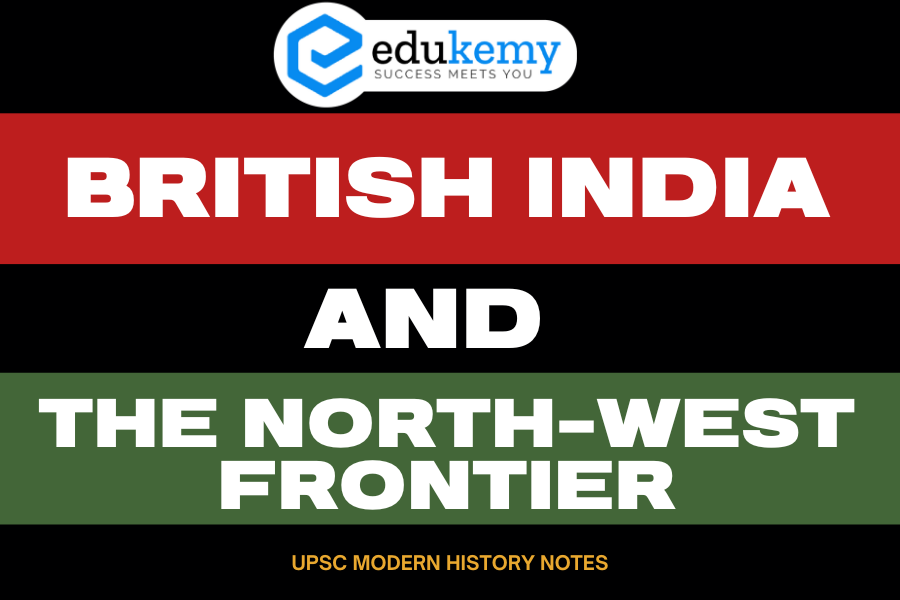
British India, a sprawling empire that spanned the Indian subcontinent for nearly two centuries, was a complex tapestry of cultures, peoples, and landscapes shaped by the ambitions of the British Empire. Within this vast domain, the North-West Frontier emerged as a region of particular strategic significance and enduring historical importance. Stretching from the rugged mountains of the Hindu Kush to the fertile plains of the Punjab, this frontier served as a buffer zone between British India and the formidable empires of Central Asia. It was a realm where colonial ambition collided with indigenous resistance, where the clash of cultures and the pursuit of power defined the course of history. From the legendary exploits of the Pashtun tribes to the great game of imperial rivalry, the story of British India and the North-West Frontier is one of conquest, rebellion, and the enduring legacy of empire.
- Expansion of British Boundaries: The conquest of Sindh in 1843 and the annexation of Punjab in 1849 extended British control beyond the Indus River and brought them into contact with Baluch and Pathan tribes. The Amir of Afghanistan claimed nominal suzerainty over these tribes.
- British Occupation of Hunza and Nagar: The British occupation of Hunza and Nagar in the Gilgit valley in 1891-92, which commanded communications with Chitral, alarmed the Amir of Afghanistan, Abdur Rahman. A compromise was reached with the drawing of the Durand Line in 1893, establishing a boundary between Afghan and British territories. The Amir received certain districts and an increased subsidy.
- Durand Agreement and Tribal Uprisings: The Durand Agreement failed to maintain peace, leading to tribal uprisings. British garrisons were established at Chitral and Malakand Pass to counter these uprisings. Tribal unrest continued until 1898.
- Curzon’s Policies: Lord Curzon, the Viceroy of India from 1899 to 1905, pursued a policy of withdrawal and concentration. British troops were withdrawn from advanced posts and replaced by tribal levies under British officers. Curzon encouraged the tribes to maintain peace.
- Creation of the North-West Frontier Province: Under Curzon’s administration, the North-West Frontier Province (NWFP) was created as a separate administrative entity directly under the Government of India. Previously, it had been under the control of the lieutenant governor of Punjab.
- Peaceful Conditions and Formation of Pakistan: Curzon’s policies resulted in a relatively peaceful North-West Frontier. The peaceful conditions continued with occasional tribal uprisings. In 1932, the NWFP was announced as a governor’s province. Following the partition of British India in 1947, the province became part of Pakistan.
- Overall, the historical developments and policies on the North-West Frontier reflect the British attempts to establish control, maintain peace, and navigate relationships with the tribes and the Amir of Afghanistan.
Contents
- 1 Frequently Asked Questions (FAQs)
- 1.1 Q: What was the North-West Frontier of British India?
- 1.2 Q: What was the significance of the Khyber Pass on the North-West Frontier?
- 1.3 Q: How did British India manage the tribes of the North-West Frontier?
- 1.4 Q: What were the challenges faced by the British in governing the North-West Frontier?
- 1.5 Q: How did the North-West Frontier contribute to the end of British rule in India?
- 2 In case you still have your doubts, contact us on 9811333901.
Frequently Asked Questions (FAQs)
Q: What was the North-West Frontier of British India?
A: The North-West Frontier referred to the region bordering British India and Afghanistan, encompassing modern-day Pakistan’s Khyber Pakhtunkhwa province and parts of present-day Afghanistan. It was strategically significant due to its rugged terrain and its role as a buffer zone between British India and the expanding Russian Empire.
Q: What was the significance of the Khyber Pass on the North-West Frontier?
A: The Khyber Pass served as a crucial gateway through the mountainous terrain of the Hindu Kush, connecting British India with Central Asia and the Middle East. Its strategic importance lay in facilitating trade, military expeditions, and the movement of people across the region. Controlling the Khyber Pass was vital for British interests in safeguarding their Indian territories.
Q: How did British India manage the tribes of the North-West Frontier?
A: British India adopted a policy of “indirect rule” to manage the tribes inhabiting the North-West Frontier. This approach involved establishing treaties and agreements with tribal leaders, providing them with subsidies and autonomy in exchange for maintaining peace and preventing incursions into British territory. Additionally, the British deployed a network of forts and military outposts to enforce their authority and deter potential threats.
Q: What were the challenges faced by the British in governing the North-West Frontier?
A: Governing the North-West Frontier posed several challenges for the British, including the region’s rugged terrain, fierce tribal loyalties, and resistance to outside interference. Additionally, the threat of Afghan and Russian incursions added to the complexity of maintaining control over the area. Balancing the interests of various tribal groups while ensuring British supremacy required a delicate and often contentious approach.
Q: How did the North-West Frontier contribute to the end of British rule in India?
A: The North-West Frontier played a significant role in the Indian independence movement, serving as a hotbed of anti-colonial sentiment and resistance against British rule. Movements such as the Khudai Khidmatgar (Servants of God) led by Khan Abdul Ghaffar Khan, also known as the “Frontier Gandhi,” advocated for nonviolent protest against British imperialism. The region’s strategic importance and its role in the independence struggle highlighted the untenable nature of British rule in India, ultimately contributing to the country’s independence in 1947.
In case you still have your doubts, contact us on 9811333901.
For UPSC Prelims Resources, Click here
For Daily Updates and Study Material:
Join our Telegram Channel – Edukemy for IAS
- 1. Learn through Videos – here
- 2. Be Exam Ready by Practicing Daily MCQs – here
- 3. Daily Newsletter – Get all your Current Affairs Covered – here
- 4. Mains Answer Writing Practice – here

